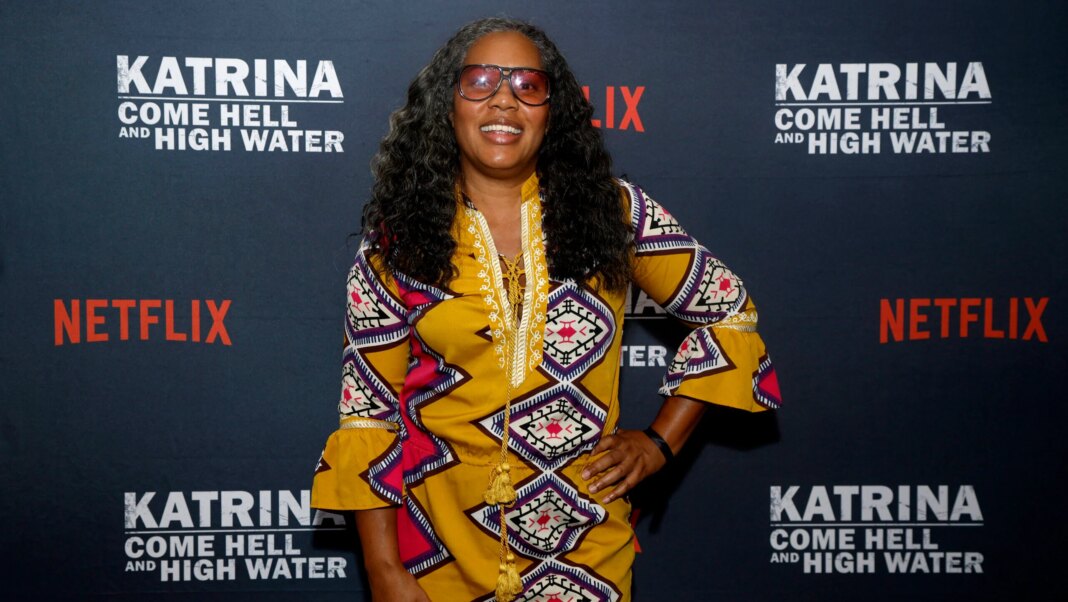### The Impact of Hurricane Katrina on Alisa Payne’s Career
Award-winning producer Alisa Payne found herself in an unexpected position during Hurricane Katrina in 2005. While she was living in Brooklyn, her sister was a third-year law student at Tulane University in New Orleans, preparing to ride out the storm. A timely warning from a classmate’s mother, who was an executive at Entergy, prompted her sister to evacuate—an action that many in New Orleans were unable to take due to the late evacuation notice.
Payne poignantly reflects on the disparity in communication, stating, “The problem was, my sister is able to get this intel, but the people in New Orleans, in Orleans Parish, did not get the evacuation notice until 36 hours before.” This dire scenario illustrates the immense challenges of evacuating a city with limited exit points under the threat of a major storm.
### Revisiting the Legacy of Katrina
In Spike Lee’s docuseries “Katrina: Come Hell and High Water,” Payne, as a producer, emphasizes the often-overlooked structural factors that exacerbated the disaster’s impact on New Orleans’ marginalized communities. Twenty years after the storm, this documentary revisits the narratives of Black, elderly, and impoverished residents, highlighting how systemic inequalities influenced the disaster’s aftermath.
As co-founder of Message Pictures alongside Geeta Gandbhir and Sam Pollard, both of whom collaborated with Lee on earlier Katrina documentaries, Payne contributed her insights to reflect on what has—or hasn’t—changed since 2005. Netflix’s interest in this project serves as a reminder of the enduring relevance of Katrina as a critical issue in American history.
### A New Generation’s Perspective
“Come Hell and High Water” isn’t framed as a direct sequel to Lee’s previous works but rather a contemporary retelling for a new generation. “People feel that they thought they knew the story,” Payne explains. “Twenty years later, we’re saying things like ‘systemic racism’ often.” The language has evolved, making formerly opaque issues crystal clear in today’s context.
This documentary also allows survivors, like former mayor Marc Morial and community figure Phyllis Montana-Leblanc, to share their experiences, reflecting on persistent issues in a changed yet familiar landscape. Morial and Montana-Leblanc’s continued visibility reinforces the notion that the narratives of survivors remain relevant and critical.
### Navigating an Evolving Narrative
The discussions surrounding the documentary reveal significant shifts in how society perceives these narratives. Payne notes that conversations around institutional racism were once much more implicit. By presenting these issues directly, the documentary encourages a deeper understanding of the systemic failures that contributed to the disaster.
Payne highlights Montana-Leblanc’s testimony, mentioning that seeing herself in the new project helped her heal after two decades. This resonates with Parker’s vision to tell stories that are not just historical but also bridges connections between past experiences and present realities.
### Crafting a Cohesive Story from Historical Context
Payne’s extensive career spans diverse themes and complex narratives, including adaptations of Ta-Nehisi Coates’ works. Each project, such as HBO’s “Between the World and Me,” challenges its audience to engage thoughtfully with systemic issues. In approaching this material, she emphasizes the need for clarity in the thesis of each project. For “Katrina,” it was essential to establish that systemic neglect transformed a natural disaster into one of the worst manmade tragedies in U.S. history.
Her approach combines a focus on both specific storytelling and universal themes. The challenge is not merely to report history but to create a narrative that resonates across time and experience.
### Differences in Local vs. Broader Narratives
When discussing the nuances of storytelling, Payne expresses the dual nature of local narratives. While local stories can dive deeply into specific issues, they also possess universal themes that connect various audiences. For instance, her upcoming project “The Perfect Neighbor,” which investigates a divisive murder, illustrates broader societal issues around fear, community, and policy.
In this case, addressing a hyper-local tragedy serves as a springboard for conversations about much larger systemic issues—encouraging viewers to reflect on their roles and responsibilities within their communities.
### The Role of Media in Shaping Community Narratives
The storytelling process for “The Perfect Neighbor” uniquely leverages police bodycam footage, highlighting the complexities of using such material responsibly. Payne recognizes the challenges posed by disjointed audio and competing narratives within this context. Yet, she sees potential in flipping the narrative—transforming often exploitative surveillance footage into a community-centric story that spotlights the humanity of the people involved.
In examining such footage, she wrestles with the implications of surveillance and asserts the importance of portraying multi-faceted communities rather than reducing them to singular narratives.
### Influences on Payne’s Career
Reflecting on her artistic inspirations, Payne cites “Roots” as a fundamental influence, shaping her awareness of history and resistance. The interconnectedness of human experiences, from the struggle against enslavement to contemporary movements for justice, informs the messages she seeks to convey in her work. Each production, whether it’s “Stamped from the Beginning” or “Between the World and Me,” is grounded in themes of resilience, resistance, and the necessity of historical understanding.
This commitment to storytelling reflects her broader goal: to challenge narratives that perpetuate misunderstanding and to present a more accurate and nuanced account of the Black experience in America.



